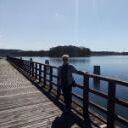PIEŚNI Z TRZECH ULIC, CHYLI AMERICAN MASTERPIECES
-
Ostatnio w Warsztacie
-
violetta 10 047
@bazyl_prost można sobie uprzyjemnić życie:)
0
-
-
Najczęściej komentowane w ostatnich 7 dniach
-
- 89 odpowiedzi
- 1 978 wyświetleń
-
- 57 odpowiedzi
- 1 075 wyświetleń
-
- 50 odpowiedzi
- 917 wyświetleń
-
- 38 odpowiedzi
- 695 wyświetleń
-
- 35 odpowiedzi
- 574 wyświetleń
-








.thumb.jpeg.b5ae7bcef73c3501c1166879fc389fb7.jpeg)

Rekomendowane odpowiedzi
Jeśli chcesz dodać odpowiedź, zaloguj się lub zarejestruj nowe konto
Jedynie zarejestrowani użytkownicy mogą komentować zawartość tej strony.
Zarejestruj nowe konto
Załóż nowe konto. To bardzo proste!
Zarejestruj sięZaloguj się
Posiadasz już konto? Zaloguj się poniżej.
Zaloguj się